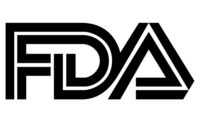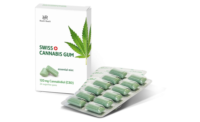The U.S. Food and Drug Administration has announced it will redefine how and when “healthy” can be claimed on food labels in order to align the term with new nutrition and dietary guidelines.
In a six-page industry guidance document, the FDA said rules for the Nutrition Facts label, updated in May, as well as suggestions outlined in the 2015-2020 Dietary Guidelines for Americans, prompted the agency to take another look at certain product claims.
Redefining ‘healthy,’ the FDA notes, is also part of an overall plan to provide consumers with information that will allow them to make quick, easy food choices that correspond with public health recommendations. The agency also hopes to encourage the food industry to develop and introduce “healthier” products.
“We have started to consider the criteria or terms for an updated definition of 'healthy' but don’t have all the answers,” says Douglas Balentine, director of the Office of Nutrition and Food Labeling at the FDA’s Center for Food Safety and Applied Nutrition, in a blog post. “As a first step, we are asking for public input on a range of questions about what 'healthy' should mean from a nutrition perspective and how consumers understand and use 'healthy' food label claims."
The FDA will solicit public comments until Jan. 26. It also plans to host public forums to gain additional input.
In the meantime, the agency has released guidelines under which manufacturers can continue to use “healthy” as a nutrient content claim without further FDA enforcement.
First, foods that are not low in total fat should have a fat profile of predominantly mono- and polyunsaturated fats. The amounts of mono- and polyunsaturated fats should be declared on labels and constitute the majority of the fat content.
Furthermore, food claimed to be “healthy” must contain at least 10 percent of the daily recommended value of potassium and vitamin D, two nutrients the FDA believes consumers aren’t getting enough of, especially in comparison to the long-emphasized vitamin A and vitamin C.
While candy innovation continues to move toward organic and all-natural formulations, Chris Gindlesperger, v. p. of public affairs and communications for the National Confectioners Association, says consumers understand how, through moderation, treats can fit in a "happy, balanced lifestyle."
"Most people in the U.S. enjoy candy about twice a week, averaging about 40 calories per day and about one teaspoon of added sugar per day from confectionery items," he says. "Chocolate, candy, gum and mints account for less than 2 percent of the average American’s overall caloric intake. It’s an honest, affordable, transparent treat."
The FDA’s announcement comes on the heels of a public comment period on the use of “natural” on food labels. While the FDA has not established a formal definition for “natural,” it considers “natural” to mean that nothing artificial or synthetic has been included in or added to food that would not be expected to have those substances.
The FDA received three citizen petitions asking the agency to define the term and another petition seeking to prohibit its use. More than 5,700 public comments were submitted between Nov. 12 and May 10.







